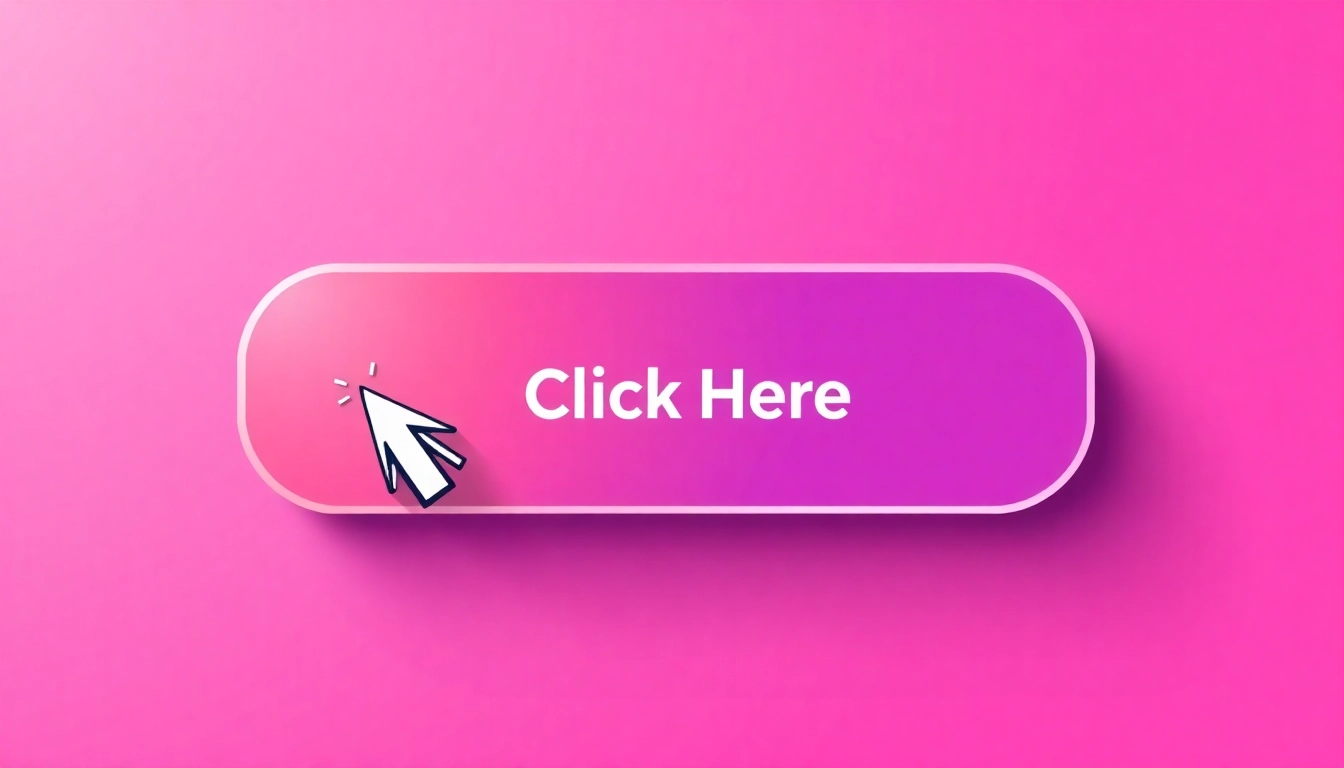Compelling Reasons to Rethink Your ‘Click Here’ Strategy for Better User Engagement

Understanding the ‘Click Here’ Phenomenon
The phrase “click here” has become so commonplace in online communication that it’s often taken for granted. However, the implications of this phrase, both positive and negative, can significantly impact user experience and engagement. To understand the relevance and consequences of using such a phrase, we first need to delve into what “click here” implies and how it has evolved in digital communication.
What Does ‘Click Here’ Imply?
At its core, “click here” is a call to action (CTA) that instructs users to interact with a hyperlink. This instruction may appear straightforward; however, the implications of such generic phrasing can lead to misunderstandings or missed opportunities. The phrase lacks specificity and does not convey any information about where the link will lead the user, which can foster confusion, especially for individuals using screen readers or other assistive technologies.
The Origin and Evolution of the Phrase
The phrase “click here” emerged with the rise of the internet as a clear command for users to engage with hyperlinks. In the early days of web design, usability was a primary concern, and CTAs were often simple and direct. As the internet evolved, the understanding of user behavior advanced, and digital strategists began to learn that the effectiveness of CTAs could be improved by using more descriptive language. Today, many digital marketing experts advocate for replacing “click here” with more informative text that describes the action or destination. This evolution highlights a greater emphasis on user experience (UX) and accessibility in digital communication.
How Users Perceive ‘Click Here’ Links
User perception of links is crucial for effective web design and marketing strategies. Research indicates that using vague language like “click here” diminishes the perceived value of the link. Users tend to react more positively to descriptive link texts that offer context about what they can expect when they follow a link. Furthermore, jargon-free language that matches a user’s cognitive load increases the likelihood of engagement. For instance, replacing “click here” with “download the eBook now” can lead to better click-through rates (CTR).
The Case Against ‘Click Here’
While “click here” may seem harmless, there are several pitfalls associated with its use that can hinder usability, accessibility, and user experience. Understanding these barriers is essential for crafting effective digital communication strategies.
Lack of Contextual Information
One of the most significant drawbacks of using “click here” is the lack of contextual information. When users encounter a hyperlink, they often scan for information about what will happen if they click on it. A generic phrase like “click here” does not inform users about the link’s destination or content, thereby reducing the chances that they will engage with it. Furthermore, search engines prioritize descriptive link text that enhances the semantic context; hence, reducing the SEO value of phrases like “click here.” Instead, crafting links that include contextual clues can improve both user understanding and optimization for search engines.
Pitfalls of Usability and Accessibility
Many users navigate the internet using assistive technologies, like screen readers, which read links aloud. The phrase “click here” provides no meaningful information, making it challenging for these users to understand the purpose of the link. Research shows that users relying on screen readers often navigate links based on the text description rather than the visual presentation. The result is that links labeled “click here” fail to meet accessibility standards, alienating a significant portion of the audience.
Alternatives to Improve Click-Through Rates
To enhance user experience and engagement, organizations should shift towards using alternatives to “click here.” Some effective strategies include:
- Descriptive Language: Use phrases that describe the action, like “download your free guide” or “join our newsletter for exclusive updates.” This transparency helps users understand the value of engaging with your content.
- Personalization: Tailoring your CTAs based on user preferences or behaviors can vastly improve engagement. For instance, a personalized “Your personalized plan starts here” can encourage users to act more than a generic phrase.
- Urgency and Exclusivity: Creating urgency with phrases like “Limited time offer: grab it now!” draws immediate attention and action.
Best Practices for Effective Calls to Action
A strong call to action is pivotal in guiding users toward desired actions. To maximize effectiveness, consider these best practices:
Creating Clear and Meaningful Link Text
The essence of a successful CTA lies in its clarity. Evaluate your link text to ensure it provides context and meaning. This involves using action-oriented verbs, such as “discover,” “explore,” or “register.” Furthermore, link text should align with the overall tone and voice of your digital communication, fitting seamlessly into the surrounding content.
Examples of Effective Call-to-Action Phrases
Here are some examples of effective CTAs that replace “click here” with more compelling alternatives:
- Instead of: “Click here to read more.”
Try: “Read our full report on industry trends.” - Instead of: “Click here to download.”
Try: “Get your free eBook now!” - Instead of: “Click here to subscribe.”
Try: “Subscribe today for the latest updates.”
A/B Testing for Optimum Performance
To discern which CTAs yield the best results, implement A/B testing strategies. This involves creating different versions of a webpage or email with varying CTAs and analyzing user response rates. Utilize metrics such as engagement rate, conversion rate, and traffic sources to determine the most effective language and design elements. Continual refinement based on tested performance can transform CTA strategies, leading to better user engagement and increased conversions.
Insights from Competitor Analysis
Analyzing how industry leaders approach CTAs can yield valuable insights for strategizing your digital communications. Understanding not only their language choices but also their design and placement can help enhance your own efforts.
How Industry Leaders Utilize Calls to Action
Leading organizations often leverage psychological triggers such as scarcity, urgency, and social proof in their CTAs. Observing these successful strategies highlights the importance of reinforcing your messages with contextual elements. For instance, companies that deploy CTAs accompanied by testimonials or visuals of engaging experiences maximize user credibility and interest.
Lessons from Successful Campaigns
Successful campaigns that defy the typical “click here” model provide rich lessons in user engagement. For example, well-executed campaigns in the tech industry often utilize bold, direct language that entices users to learn more about their innovative solutions. These organizations understand the significance of conveying value and leveraging the emotional appeal of their offerings.
Avoiding Common Mistakes in CTA Design
Among the prevalent errors in CTA execution are relying on ambiguous phrases, making engagement requests too abrupt, and neglecting mobile optimization. Users engaging on their mobile devices require concise and impactful CTAs due to their limited attention span. Keeping CTAs mobile-friendly ensures they can easily navigate and act upon your content.
Conclusion: Strategizing for Future Success
In a constantly evolving digital landscape, the language and strategy behind your CTAs must adapt accordingly. Moving away from the vague “click here” significantly enhances user experience and improves engagement rates.
Summarizing the Key Takeaways
To distill the core insights from this discussion regarding effective CTAs:
- Avoid using “click here” in favor of specific, descriptive language that informs users about the action or content.
- Emphasizing clear, actionable CTAs fosters user trust and improves click-through rates.
- Implementing A/B testing will allow for continual refinement of CTAs based on real user data.
Action Items for Improved Engagement
To move forward effectively, consider these action steps:
- Audit your current CTAs to identify instances of vague language.
- Revise your language to enhance clarity and motivation.
- Experiment with A/B testing to ascertain the most effective CTAs for your audience.
Embracing Change in Digital Communication
As technology continues to shape how we communicate, embracing change in our digital strategies is essential. By recognizing the shortcomings of generic phrases like “click here,” we can pioneer more innovative and engaging user experiences. This progression will not only enhance our interactions but also promote a culture of inclusivity and accessibility in digital spaces. For more insights, Click Here to explore relevant discussions and best practices.







